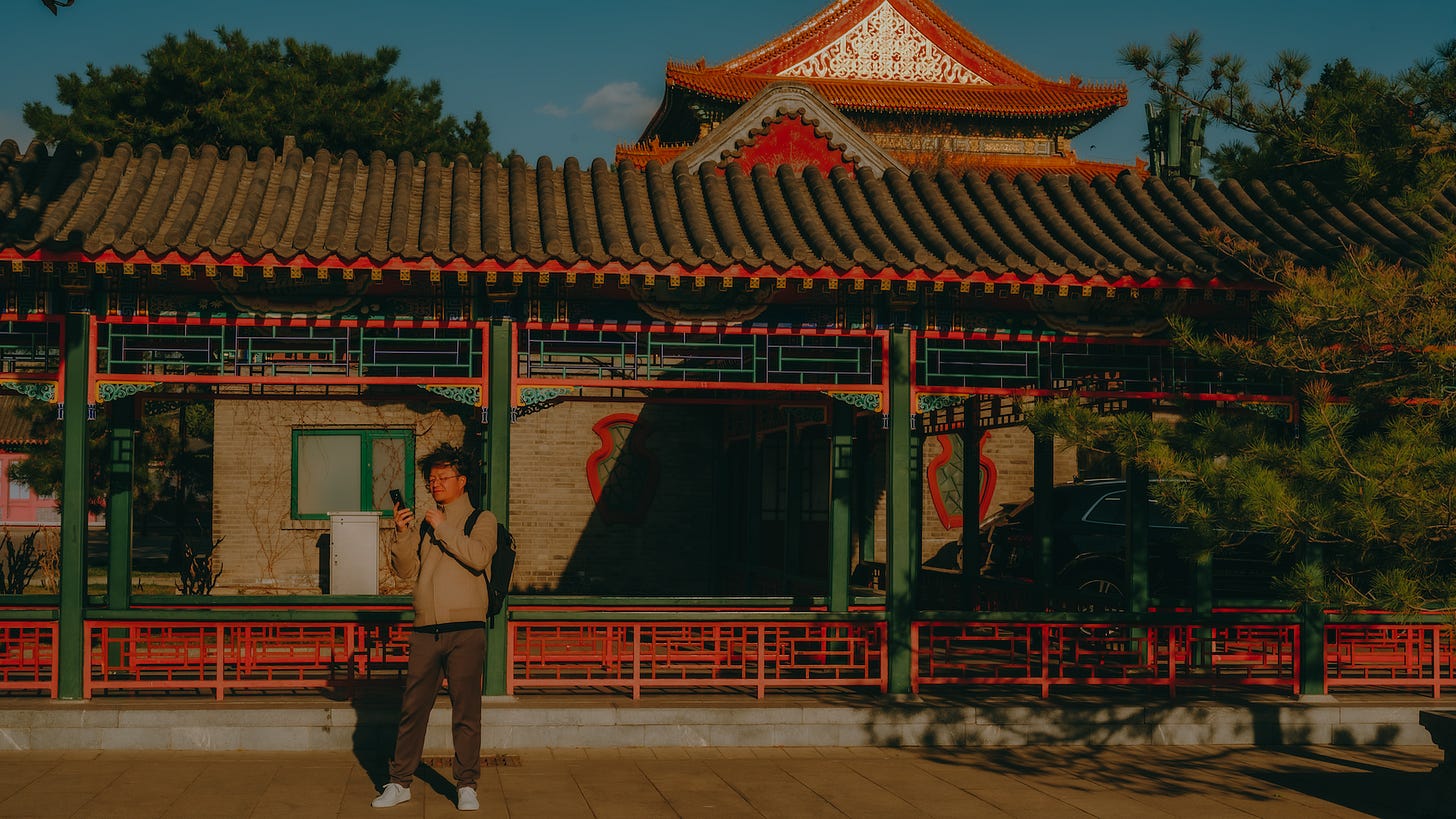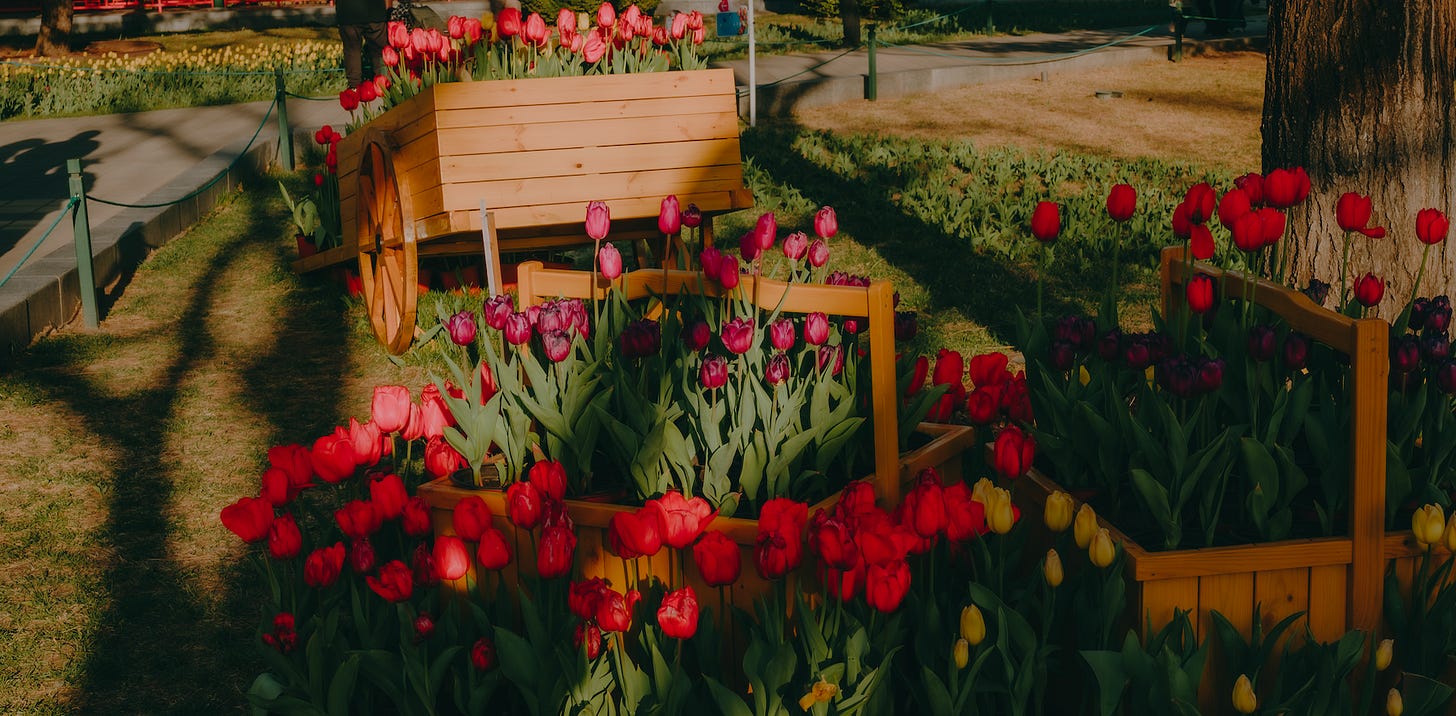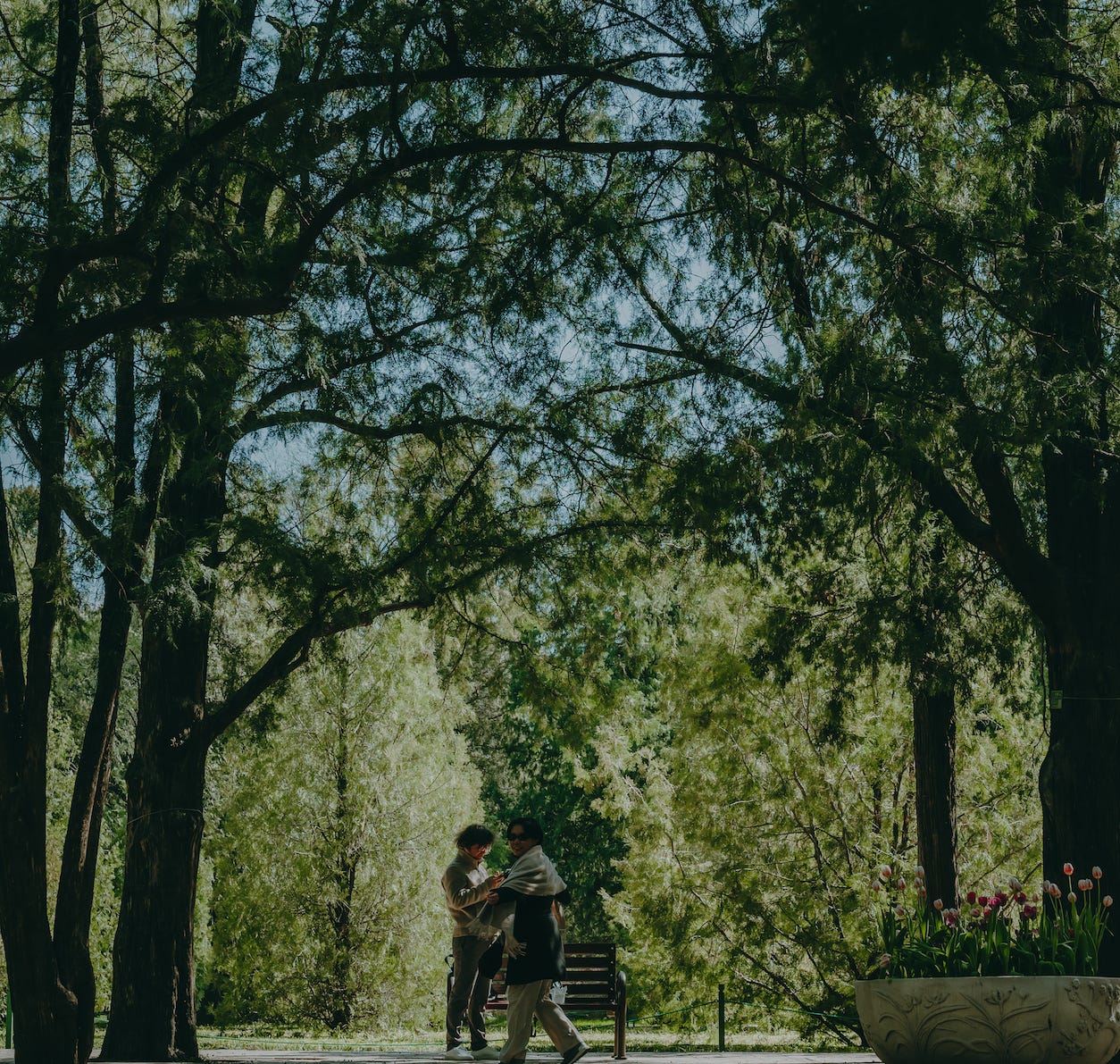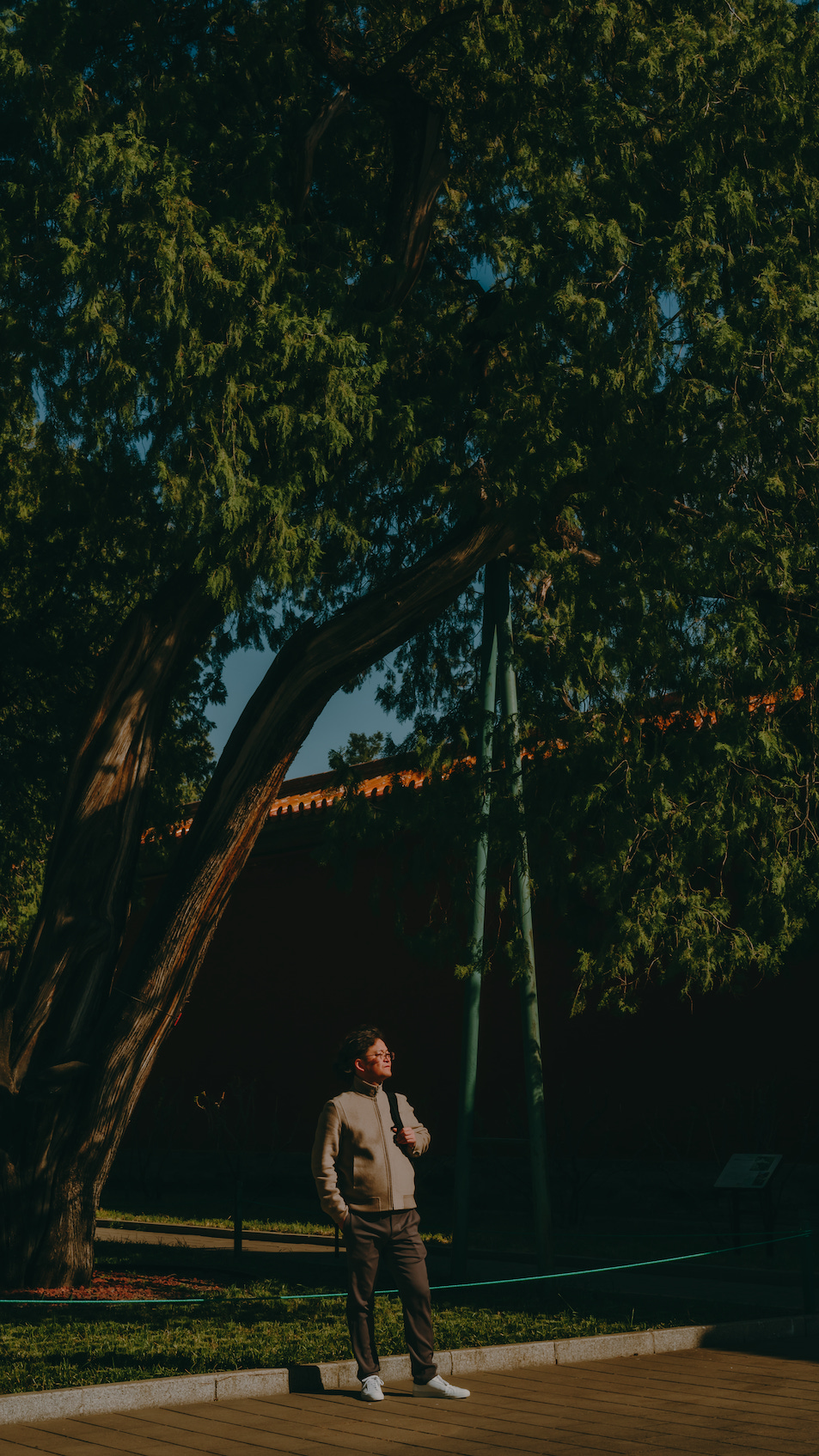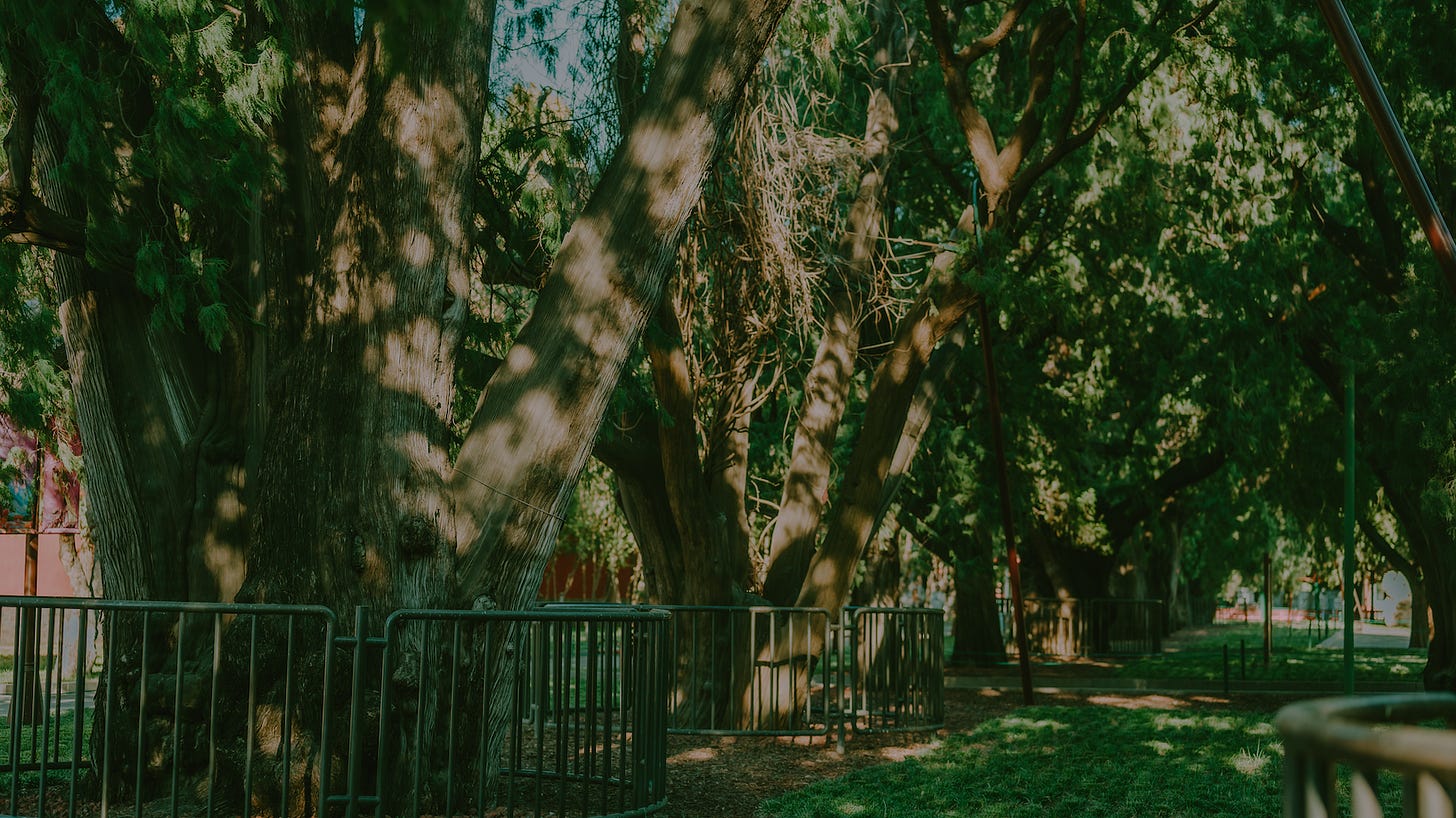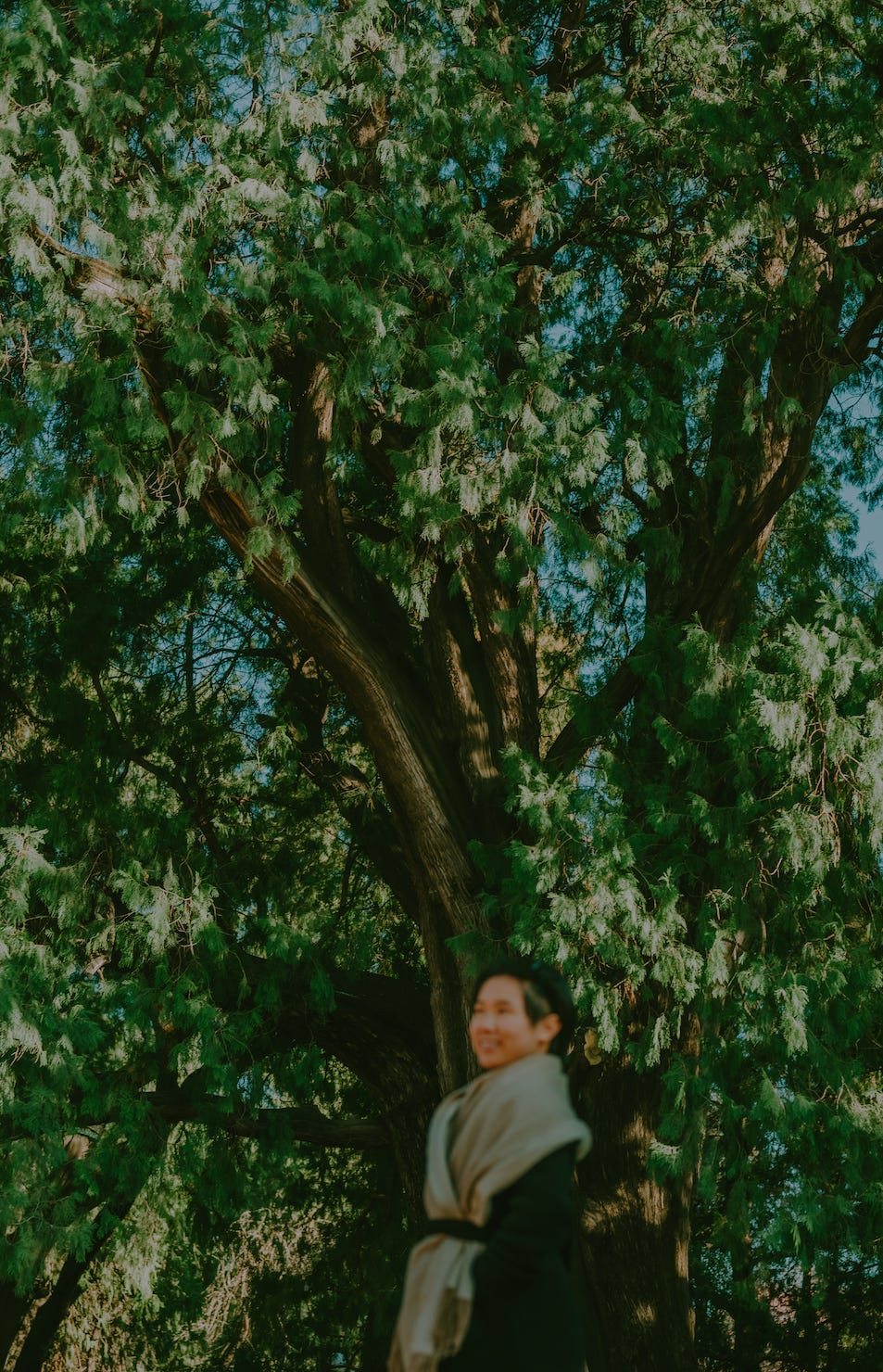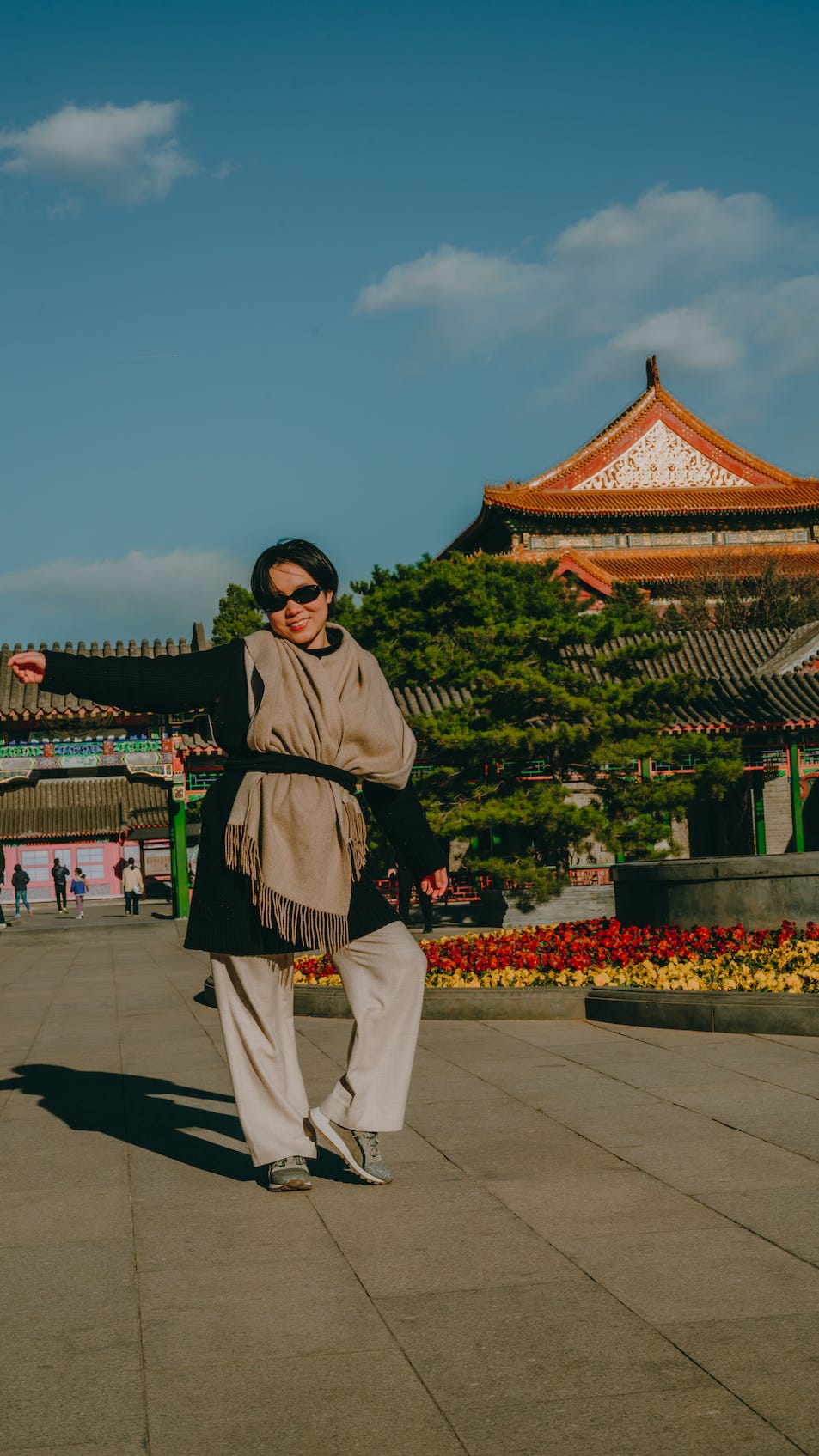Zhongshan Park || A Hidden Gem Next to the Forbidden City & Tiananmen – Walking Routes
Last year, I was interested in seeing the tulips at Zhongshan Park. Because the park is relatively small and adjacent to Tiananmen Square and the Forbidden City, there's less information about it online and it has lower visibility, so I hadn't visited until now. Recently, I wanted to walk around Tiananmen Square without making a reservation. Walking along Chang'an Avenue from east to west in February wasn't satisfying enough, so since I bought an annual pass this year, I decided to visit Zhongshan Park.
This time I entered and exited through the west gate. After finishing my visit, I realized that the most convenient approach would be to exit Tiananmen West subway station and enter through Zhongshan Park's south gate, which is right next to the Tiananmen viewing platform. The south gate is entrance-only, and as soon as you enter, you see the large flower bed below, with Tiananmen Square and four red flags behind it.
The corridors on the south side have excellent feng shui. It was around 4 PM when I visited, and the golden sunlight shining from the west felt particularly warm. In this small plaza at the south gate, you can feel the vast expanse of Tiananmen Square. Once when I was cycling from Tiananmen East to Xidan, I witnessed the sunset and was struck by the vastness of the space. Buildings around Tiananmen are height-restricted to just two or three stories, so in the city center, you can experience a rare sense of "sky high enough for birds to fly freely, sea vast enough for fish to leap" - a feeling of magnificent openness. I've lived in Tianjin, Nanjing, Shanghai, and Chengdu, but only Beijing has this kind of expansive grandeur.
When shooting against the light, sometimes you can capture rainbow light. The marble archway on the right faces the south gate. I'm standing across from Zhongshan Park's visitor center, which offers strollers, charging stations, umbrellas, wheelchairs, and other conveniences.
Shooting with the light gives you the typical warm orange glow of the setting sun.
The optimal route is to enter through the south gate, pass by Zhongshan Park Concert Hall and the Altar of Land and Grain, then exit through the east gate, which is directly opposite the Wumen Gate of the Forbidden City, or exit through the west gate. The western part of Zhongshan Park is less crowded and more secluded, particularly quiet under the cypress trees, mostly frequented by middle-aged and elderly visitors. Young people tend to gather near the south gate and Altar of Land and Grain area. I don't recommend the southwest corner, as the scenery is ordinary and there's not much activity.
The photo below was taken at Tang Flower Garden in the southwest corner (requires an additional ticket; the two black stones at the entrance are quite ugly). In the bottom right, you can see the cart-shaped flower beds with blooming tulips. I suggest waiting another two weeks, as currently only the flower beds are blooming, while the tulips in the lawns are only half-grown.
When I lived in Shanghai, Shanghai's Zhongshan Park also planted many tulips. You can tell from the photos that Zhongshan Park has excellent management with a dedicated park management team. The visitor center at the south gate plays videos introducing the park's gardeners, tulip cultivators, and other staff. After all, Zhongshan Park is right under the watchful eyes of the Forbidden City and Tiananmen Square, and it's China's first public park.
Additionally, in April, besides Zhongshan Park, the National Botanical Garden is also good for tulips.
Although we didn't take the optimal route this time, because the park is small and we had plenty of time, we walked a complete circle and saw most of the sights.
We got off at Tiananmen West subway station and had our ID cards checked three times before entering the west gate: once when exiting the subway, once on South Chang Street, and once more when entering Zhongshan Park, as the park is opposite Zhonghai and Nanhai. At the west entrance, we could see police officers coming into the park to use the restrooms, moving briskly under the shade of the cypress trees.
The cypress grove near the west gate has many facing benches. I placed my camera on the opposite bench to take a selfie of us. The red tag on the left of the photo indicates a first-class ancient tree. Zhongshan Park has many centuries-old cypress trees, with several thousand-year-old specimens in the "Ancient Tree Area," which I'll introduce as we continue along this route.
Summer is the best time to stay under the cypress trees, with gentle breezes and lush greenery. Sitting on a bench, making a phone call to family and friends, having afternoon tea, and feeling the sun on your back is very enjoyable. But I observed that it's mostly older couples sitting quietly enjoying the atmosphere.
We arrived at noon and had lunch on these benches before continuing our tour. A large part of the vlog video at the end was filmed here.
Speaking of quiet benches under cypress trees, there's Zhongshan Park, then Temple of Earth Park, and Temple of Heaven Park, which is mainly planted with cedars and pine trees. Sitting on the benches in these three places gives you a sense of historical tranquility. The benches at the Summer Palace, on the other hand, offer views of mountains and waters, which is another kind of charm.
After finishing our meal and using the restroom, we headed north and could see the moat and the southwest corner tower of the Forbidden City. Because of the high railings, we didn't linger long and continued toward the Maxim Pavilion.
Standing at the Maxim Pavilion, I photographed this ancient cypress. Cypress trees grow slowly, which is why they're called "ten-thousand-year cypresses." You can see that each of these branches would take about 200 years to grow to this diameter. The main trunk is about three times thicker, so this tree must be around 800-900 years old.
From the Maxim Pavilion, we walked north to south around to the Zhongshan Hall, where we saw the prominent three-character plaque. Previously, this was the Altar of Land and Grain where Ming and Qing dynasty emperors worshipped the gods of earth and grain. After Sun Yat-sen's death in 1925, his coffin was placed in the Central Park's Altar of Land and Grain for public mourning. To commemorate Dr. Sun Yat-sen, in 1928 the Altar of Land and Grain was renamed Zhongshan Park, and the altar's worshipping hall was renamed Zhongshan Hall.
Standing at the Altar of Land and Grain outside the hall, you can capture the entire building. The walls in the photo are black because the north side represents the Black Warrior (Xuanwu), while the west side is white for the White Tiger, and the east side has blue-green tiles for the Azure Dragon.
But the southern brick wall is golden for some reason, when it should be red. To the right of this image is the Peach Garden and the Park History Exhibition Hall.
From the position where I took the photo above, I could capture the image below. The five-colored soil is placed on the stone bricks behind. After all, this was for worshipping the gods of earth and grain. The Park History Exhibition Hall and the First Historical Archives of China also display the five grains and five-colored soil.
This photo shows the spacious feeling of the area. Buildings around Tiananmen Square are all like this—short and wide, giving a sense of stability and groundedness. Because the buildings are low, they don't block the sky, making the sky appear vast. Unfortunately, such buildings are only found near Tiananmen Square.
After leaving the Altar of Land and Grain, I went to the Plum Garden because it was in full bloom, and there were more young people here, making it more lively. Mid-March features peach blossoms and new willow trees, while late March showcases magnolias and plum blossoms.
The plum blossom variety below might be called Cinnabar Plum, as there are so many plum varieties. China has been debating whether the plum blossom or peony should be the national flower. I prefer plum blossoms a bit more than cherry or peach blossoms—they have more character, are more substantial, and some varieties have a subtle fragrance.
I prefer plum blossoms, especially the double-petaled ones in the photo. The petals don't fall easily, and the flower shape is more distinct and substantial. You can even smell the fragrance of plum blossoms here. The plum blossoms in Zhongshan Park are expected to end after the Qingming Festival.
This set of photos was taken with backlighting, with rainbow light in the upper left corner. The red plum blossoms and green willows are truly beautiful. I never understood why apricot blossoms and plum blossoms share the same English word "plum." Zhongshan Park has a special variety called "Zhongshan Apricot," which is a hybrid of plum and apricot blossoms.
Growing up in Sichuan, plum blossoms were rare. I only knew about peach blossoms and rapeseed flowers. My first encounter with plum blossoms was in Shanghai, where southern varieties are famous. But I fell in love with plum blossoms in Beijing—those at the National Botanical Garden and Zhongshan Park really captured my heart.
Next to the Plum Garden is this exhibition hall. Many buildings along Beijing's central axis, including the Long Corridor at the Summer Palace, have these decorative horizontal beams called "efang." When I visited, I kept looking up and down, noticing the striking differences.
From here, we walked toward the ancient trees and encountered these over thousand-year-old Chinese arborvitaes, twice as thick as those at the Maxim Pavilion. In English, they're called Thuja, though I can't distinguish between them and Cypress. When it comes to detailed classifications of plum blossoms or cypress trees, my brain doesn't work well. I think it's good enough that I can distinguish between cypress and pine trees, and between plum and peach blossoms. I love plants but don't understand botany well enough to study it deeply.
In this photo, my eyes look small because I had been wearing sunglasses. After wearing them for a long time and taking them off, my eyes tend to look tired.
The trunks of the ancient cypress trees have vertical lines that feel nice to touch and are pleasing to look at. Whether it's trees or clothes, I prefer those with texture.
Continuing south from the ancient trees, we reached the south gate mentioned at the beginning, which I won't describe again with photos. The southwest scenery is ordinary, as seen in the image below.
Finally, we circled back from the southwest to the west gate, concluding our visit to Zhongshan Park after 5 hours. No matter which park we visit, we always stay for at least 4 hours. After such visits, we feel energized and better prepared for the next week.
Zhongshan Park ranks in my top 5. Although it's not large, it has beautiful scenery and good feng shui. Throughout our visit, I took many photos and wrote this 2000+ word article. For parks I don't like, I not only take fewer photos but also find little to write about. When the tulips bloom in late April, I might visit again. The Zhongshan Park Tulip Cultural Festival runs until April 30th:
In 1977, tulip bulbs gifted by the Queen of the Netherlands took root in Zhongshan Park, establishing an unbreakable bond between the park and tulips. Since 1996, Zhongshan Park has been hosting tulip-themed exhibitions. After decades of careful cultivation and display, the Tulip Cultural Festival has been held continuously for 30 years.
I also edited a video of this Zhongshan Park visit in my Youtube account
WeChat : pamperherself







